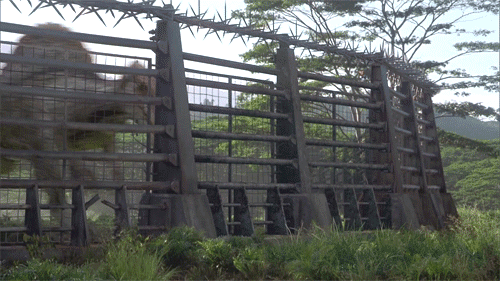WARNING: Possible spoilers for Jurassic World: Fallen Kingdom ahead
Jurassic World: Fallen Kingdom is currently in theaters, and it has brought interest back to the world created by Michael Crichton and Steven Spielberg back in 1993. You would be surprised by the massive fandom for the films and the theories that have come out over the years. Jurassic Park is a pop culture force, but the background and story don’t lend too much to a large mythology. It still exists, though, and it would seem that the creators behind the new films have looked around in between movies.
One of the open questions surrounding the new films is the fate of Site B, Isla Sorna, from the two sequels to the original film. It could’ve easily just continued as a nature preserve like it was at the end of The Lost World, but it turns out it served as a small story purpose in Jurassic World and its sequel. All of this was revealed through the Dinosaur Protection Group website created to tie into the new film, giving us a bridge from the original films to the new ones in an official sense. Isla Sorna played a role in the creation of Jurassic World in a pretty obvious way:
The operation to move the surviving animals from Isla Sorna to the park site on Isla Nublar was critical to their well-being. A considerable and mystifying drop in population on Isla Sorna had recently been discovered; some paleontologists claimed it was the result of territorial disputes, others argued disease was the catalyst, while some scientists even placed the blame on the animals’ behavior. Recent revelations linked to the corruption of the Gene Guard Act by members of Masrani Global confirm the true cause – the introduction of illegally cloned animals on the island in 1999 caused a profound impact on the ecosystem. The term ”Chaos Effect,” coined from Dr. Ian Malcolm’s book God Creates Dinosaurs, has since become the accepted term for describing the radical and unnatural changes that took place on Isla Sorna.
The sudden drop in population and the “illegally cloned animals” point to one culprit:

SyFy Wire agrees with this outcome and explains that the Spinosaurus from Jurassic Park III represents an unnatural addition to the other unnatural inhabitants of Isla Sorna, with many fans even taking it a step further by claiming it is the first example of a genetically modified dinosaur like the Indominous Rex. But even if that last part is just some fan theorizing, introducing the hypercarnivore to the island and having it kill the existing predators without any trouble creates quite the problem according to SyFy Wire:
Let’s say the T-Rex hunts the Triceratops. This keeps the T-Rex fed and also keeps the Triceratops population in check. But suddenly, the highly territorial Spinosaurus comes in and eats the T-Rex, but doesn’t exactly hunt in the areas that the Triceratops live. Instead, the Spinosaurus, which lived closer to the rivers and lakes, goes hunting something else.
So, now the Triceratops population has nothing there to limit its growth. And more growth means fewer resources.
This is a sadder ending than whatever happened to that Brachiosaurus. The island is abandoned essentially and the dinosaurs that were starved to death from famine or disease. It is a more emotional death than a wall of hot ass killing you instantly. The eventual movie about Isla Sorna is going to be depressing as hell.
(Via SyFy Wire / Dinosaur Protection Group)
